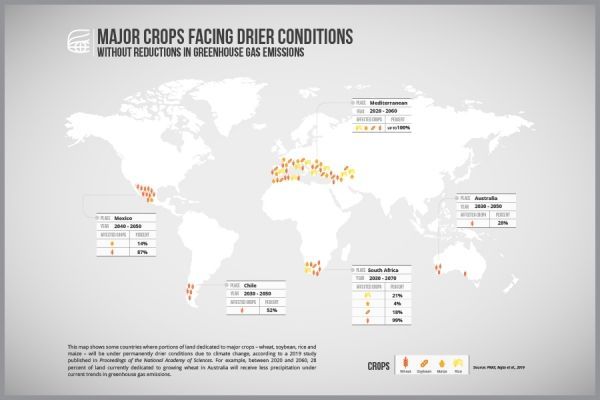By 2040, rainfall on wheat, soybean, rice and maize will have changed, even if Paris Agreement emissions targets are met. Projections show parts of Europe, Africa, the Americas and Australia will be drier, while the tropics and north will be wetter.
Even if humans radically reduce greenhouse gas emissions in the short term, important crop-growing regions of the world can expect changes to rainfall patterns by 2040. In fact, some regions are already experiencing new climatic regimes compared with just a generation ago. The study, published March 11 in Proceedings of the National Academy of Sciences, warns that up to 14 percent of land dedicated to wheat, maize, rice and soybean will be drier, while up to 31 percent will be wetter.
The study uses four emissions scenarios from low to high to predict time of emergence (TOE) of permanent precipitation changes, meaning the year by which precipitation changes remain permanently outside their historical variation in a specific location. The research shows that quick action on emissions – in line with 2015’s Paris Agreement – would push TOE projections deeper into the future or reduce the size of affected areas.
Drier regions include Southwestern Australia, Southern Africa, southwestern South America, and the Mediterranean, according to the study. Wheat cropland in Central Mexico is also headed for a drier future. Wetter areas include Canada, Russia, India and the Eastern United States.
Read more at International Center for Tropical Agriculture (CIAT)
Image: This infographic shows a selection of areas and crops that will be affected by reduced rainfall in coming decades due to climate change, according to a 2019 study in PNAS. Percentages refer to area of land currently dedicated to cultivation of the specified crops. (Credit: Lucelly Anaconas / International Center for Tropical Agriculture (CIAT))


